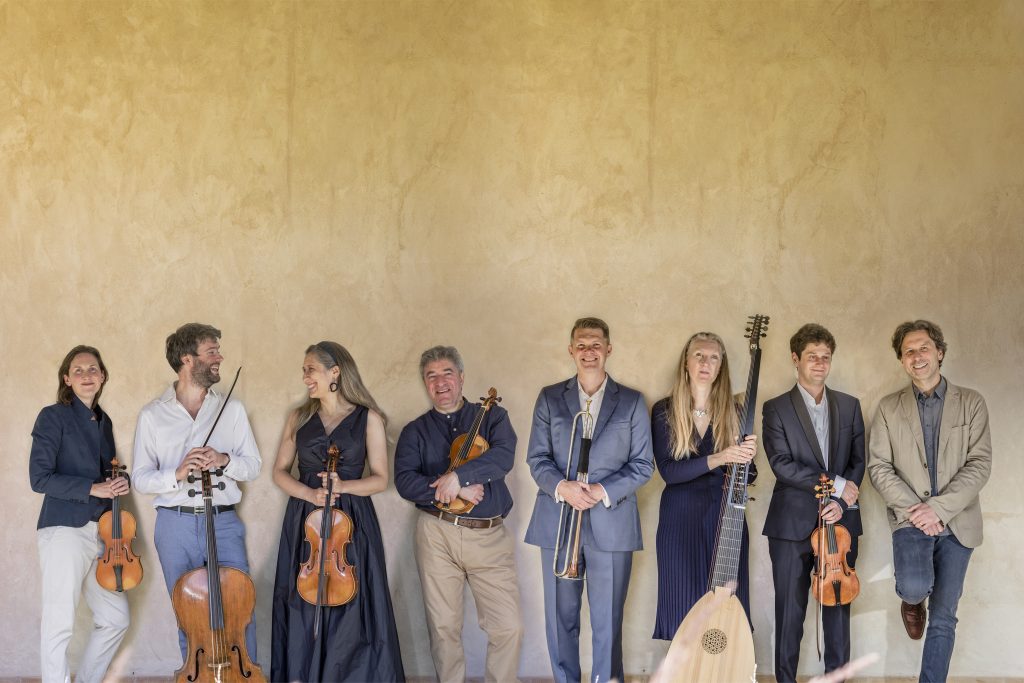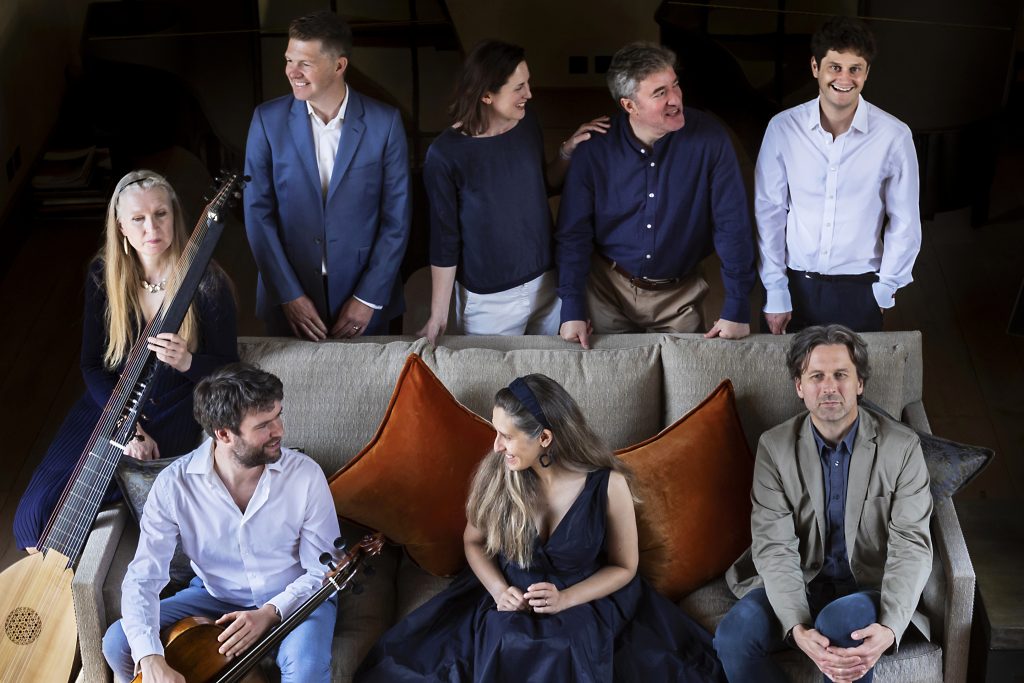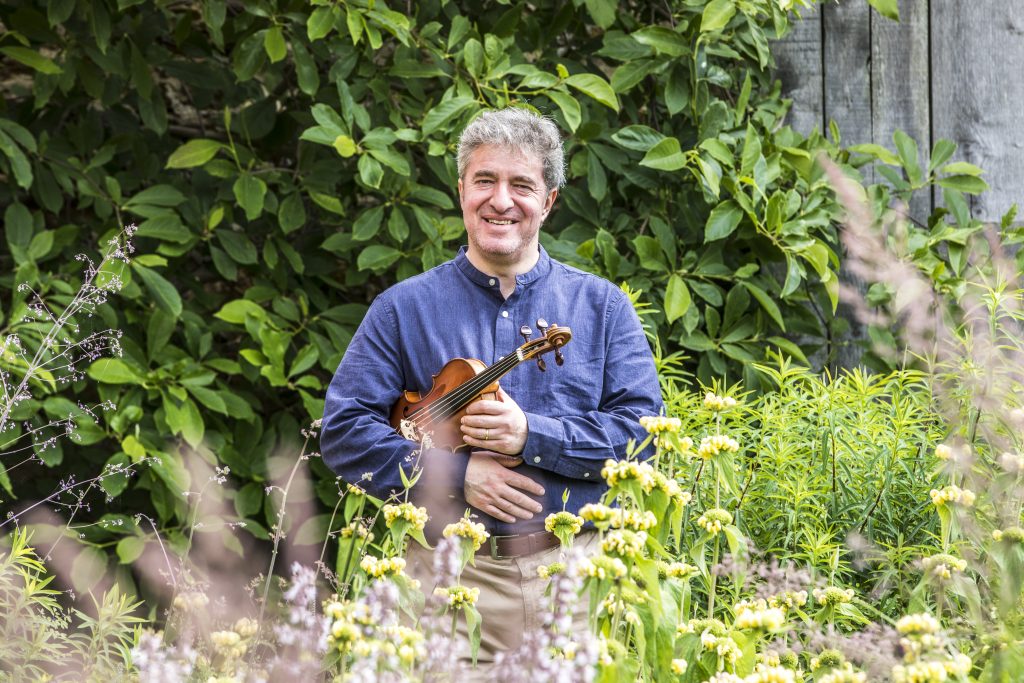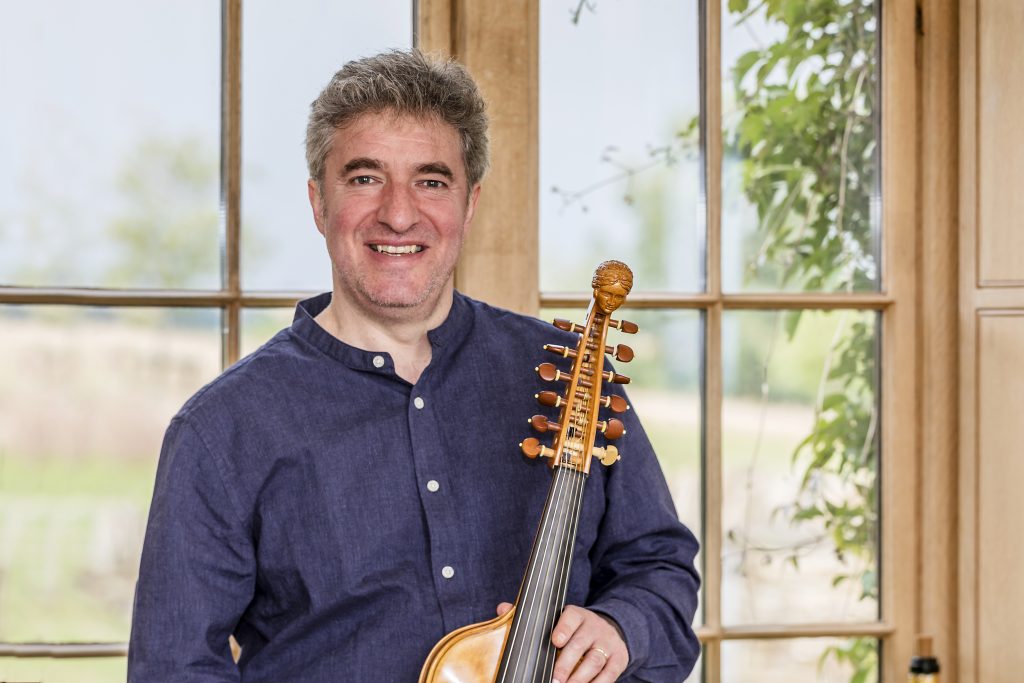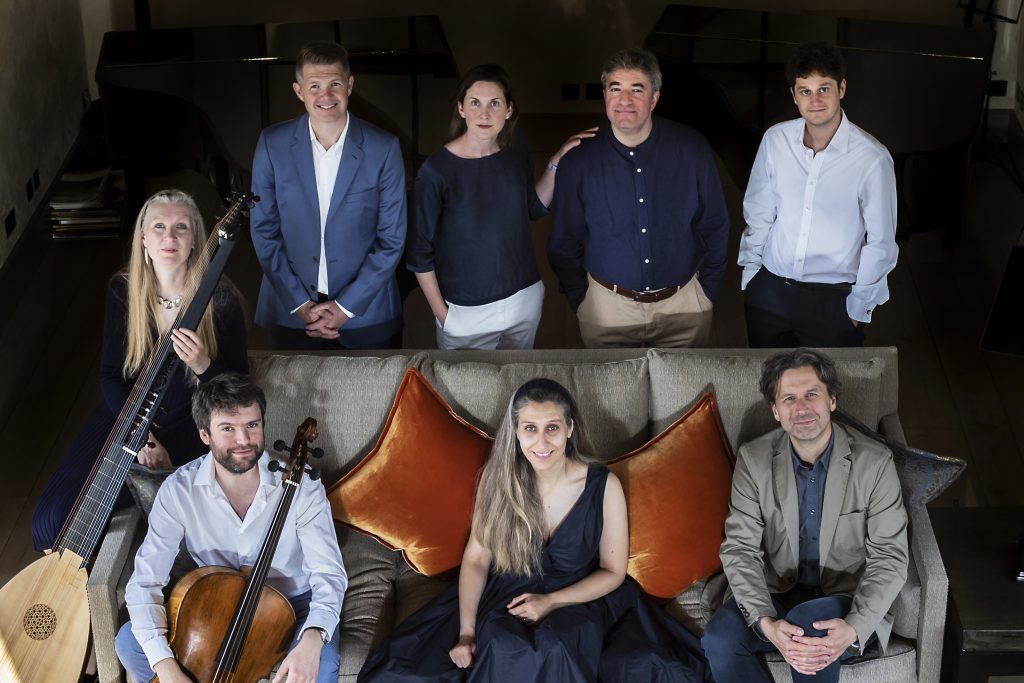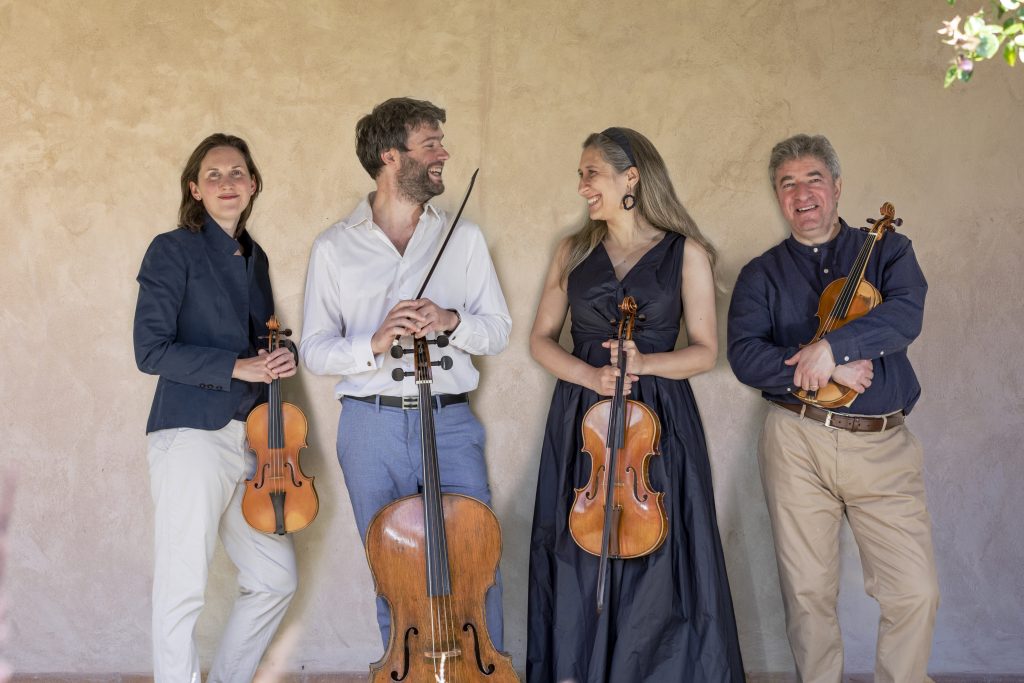
Press
Please get in touch if there is anything else you require.
Images
La Serenissima requests that photographers be credited. For more information contact the General Manager or see their individual websites:
Lia Vittone – www.liavittone.com
Reviews for promotional use
The Telegraph
The Four Seasons at The Wigmore Hall
‘… one of Britain’s best-loved chamber orchestras… Whipping up a storm with Vivaldi.’
‘La Serenissima, the “most serene republic of Venice”, is also the name of one of Britain’s best-loved chamber orchestras. … The group’s chatty director Adrian Chandler, assured us that Lorenzo Zavateri’s Concerto for Two Violins was “a real corker”, and he wasn’t exaggerating. It too had a lovely pastorale and a delicious slow movement… For a moment, I thought I was listening to a sentimental Italian pop ballad from the 1970s. … The piece everyone was waiting for was Vivaldi’s Four Seasons. No classical pieces are more overplayed, recomposed and generally abused than these four concertos. And yet, when played with fire and imagination, they are revealed as the masterpieces they truly are. … Chandler and his group achieved that magnificently. … There was a pungent earthy vividness to everything, which reminded us that Vivaldi – unlike the modern day sophisticates who have recomposed and rearranged his masterpiece – had actually experienced the country realities his music evokes so brilliantly.’
Ivan Hewitt, The Telegraph
BBC Music Magazine
Behind Closed Doors CD
‘… polished and invigorating. Chandler’s solo violin playing is articulate, warm toned and communicative … a rewarding issue.’
‘Behind Closed Doors’, while suggesting high level diplomacy, intrigue or, perhaps, mischievous romps, refers to none of these, but is the title chosen by La Serenissima’s director, Adrian Chandler, to illustrate the serious artistic and financial difficulties faced by musicians during the Coronavirus pandemic. This release, the first of two, features three violin concertos and three sinfonias from Giuseppe Antonio Brescianello’s Op. 1. The remaining concertos and sinfonias will appear in a forthcoming release.
Brescianello was a Venetian violinist and composer who spent most of his working life in Stuttgart. His Op. 1 was published in Amsterdam, probably in about 1727, though later dates have been suggested. The debt to his slightly older contemporary, Vivaldi, is at once apparent, though only very rarely could this music be mistaken for the work of his celebrated compatriot. TheAdagio ed à tempo giustoof the A minor Violin Concerto bears a strong likeness to theLargoof the last concerto of Vivaldi’s set,La Stravaganza, and much of the solo passagework elsewhere has a Vivaldian flavour.
Nicholas Anderson, BBC Music Magazine, Double 5 star review (December 2021)
Music Web International
Behind Closed Doors CD
‘The variety of Brescianello’s invention and the quality of the playing provide seventy minutes of pure listening pleasure.’
The title ‘Behind Closed Doors’ alludes to the first pandemic lockdown in the UK and to the precarious situation that has faced jobbing musicians ever since. I was especially impressed by the first half of Adrian Chandler’s booklet note, a sobering account of the circumstances which his terrific ensemble La Serenissima were forced to overcome during this period and more specifically of the obstacles they faced in putting the present disc together. Having read the testimonies of several musicians in recent months this was the first to have focused upon the impact of lockdown on freelance groups such as Chandler’s. Over the last fifteen years or so, La Serenissima has established a deserved reputation as one of the most imaginative interpreters of 18th century Venetian music around. Its standing as an outstanding live band has been reinforced by a sequence of exceptional discs released on Avie and Signum which prior to Covid-19 had created inexorable momentum for the group. The resultant inertia for any ensemble, let alone one based in the rural West Country, could easily have proved fatal and Chandler pays fulsome praise to the crowdfunders and other benefactors whose time and generosity enabled the group to survive and after a considerable hiatus record this album. I am pleased to report that the challenges presented by social distancing and the like during its preparation and recording seem to have had little discernible effect upon the intensity of their playing or the beauty of their sound.
Giuseppe Antonio Brescianello was apparently born in Bologna but seems to have spent the majority of his life in what is now southern Germany, initially in Munich before relocating to Stuttgart and its environs. He first arrived there in 1715 following the conclusion of the War of the Spanish Succession; he was among those musicians recruited by Teresa Kunegunda Sobieska, the electress of Bavaria who beforehand had been exiled in Venice. Significant works among his modest output include the opera Tisbe (Adrian Chandler and La Serenissima were responsible for its first modern UK performance at the 2018 Buxton Festival; there is a recording by Il Gusto Barocco and Jörg Halubek on CPO 777 806-2), sundry trio sonatas and concerti a tre and a set of 18 partitas for the colascione, a long-necked cousin of the lute. Yet the only music by Brescianello which seems to have been published during his lifetime is the sequence of 12 Concerti e Sinphonie, Op. 1; it consists of two books each of which comprise three violin concertos and three string symphonies. The present disc includes the first book as well as one Brescianello’s six orchestral suites, conceived in the French style.
Whilst the three Opus 1 concertos included can hardly be said to stray too far from the Vivaldian blueprint they are a delight to hear in these vital, refreshing accounts. They are effervescent in spirit and rich in invention. Chandler leads readings which are perfectly paced and tastefully inflected. The balance between solo and tutti could barely have been realised more effectively, a wonder in itself given the practical challenges involved a year ago. There is an attractive bloom to Chandler’s solo contributions, not least in the honeyed tone that emerges consistently in Brescianello’s delicate slow movements. The slightly briefer symphonies (or Sinphonie as they are unusually designated) project the ensemble in a slightly softer focus. These works each comprise two swift movements with brief slow pendants attached to the first to provide a fleeting contrast. La Serenissima’s performance and Signum’s recording of this delightful music seems ideal to me; I note that the sessions took place at Millfield School – it is unclear whether it was a creative choice or a practical necessity to move from La Serenissima’s most recent preferred recording location (Cedars Hall at Wells Cathedral School) but the new surroundings seem most conducive to the group’s distinctive sound.
I would venture to suggest that Brescianello’s Ouverture-Suite in B flat which is placed last on the programme provides the most distinctive music here. Adrian Chandler concedes that Vivaldi is the predominant influence behind the Opus 1 pieces but also refers to “…a Germanic thoroughness in their harmonic outlook” which may well be apparent to the ears of listeners blessed with a more detailed technical appreciation of this repertoire than mine. The French stylings of the Ouverture-Suite however are unmistakable even without the clues provided by the work’s title and the labels applied to its tiny dances (Gavotte, Bourrée, Rondeau, Gigue). The lovely Ouverture itself is stately in manner but delivered with an agreeable lightness of touch which prepares one neatly for the lithe and aptly contrasted morsels which follow. As ever Chandler’s nuanced, tasteful approach draws playing which is simultaneously affectionate and bold.
Chandler is candid in the note about his anxieties regarding the release of a disc dominated by a single opus from a composer who might conceivably be perceived as something of a peripheral figure compared to the established stalwarts of the Venetian scene. As far as this critic is concerned he needn’t have worried; this is a marvellous disc. The variety of Brescianello’s invention and the quality of the playing provide seventy minutes of pure listening pleasure. It’s a disc to savour piece by piece, not one to be relegated to background listening. Giuseppe Antonio Brescianello’s catalogue may be modest in size but the selections here achieve a consistently high quality. I certainly hope that Signum don’t delay too long in sharing the next instalment.
Gramophone Magazine
Extra Time CD
‘…the music-making is top-drawer and joyous.’
‘
Adrian Chandler and La Serenissima have had a run of snappy album titles in recent years – ‘The Italian Job’, ‘The Godfather’, ‘Vivaldi x2’ – yet this one does feel especially well tuned. Its starting point was a concerto captured on the spur of the moment in 2015, when all the music for their 2016GramophoneAwards-shortlisted VivaldiFour Seasonshad been recorded 25 minutes ahead of schedule – Vivaldi’sConcerto per la Solennità di S Lorenzo, RV286, which was supposed to have been recorded the previous year for a collection of Vivaldi’s sacred works which had ended up being shelved for cash-flow reasons. While 25 minutes for this concerto was cutting things tight, La Serenissima were able to produce a take eminently worthy of release once Chandler had found it some disc partners – which he then did through building extra time into subsequent sessions.
Fast-forward to the present day, and the great news is that ‘Extra Time’ is bristling with all the elegantly zestyjoie de vivrefamiliar from those previous albums. For instance, remember the glorious climax of Torelli’s Sinfonia for four trumpets, timpani, two oboes, two bassoons, two violins, two cellos, strings and continuo on ‘The Italian Job’ (Avie, 5/17)? Well, Chandler leapt on that opportunity to take down a similarly scored movement of a ballet suite by Nicola Matteis the Younger, which in turn led him to complete and record in its entirety another of Matteis’s ballet suites during similarly sized 2019 sessions for ‘The Godfather’, and the result is a big-guns finale that matches up to the glorious climactic shout of ‘The Godfather’.
Still, while La Serenissima know how to raise a roof with panache, there’s also all manner of softer moments to savour, such as the quieter brand of joy heard through Chandler’s own poised, clean-toned long lines during theLargoof the G major Violin Concerto by the little-known, Vivaldi-influenced Bolognese composer Giuseppe Antonio Brescianello. Another quality worth pointing out is the fact that, underpinning all the timbral variety and solo action, is some fabulously sensitive ensemble blending.
One final point worth making is that while I can think of any number of multi-location recordings that play out as an acoustically choppy experience, ‘Extra Time’ is no such affair. The engineering is as consistent as the music-making is top-drawer and joyous.
Charlotte Gardner, Gramophone (October 2020)
Gramophone Magazine
The Godfather CD
‘…nothing short of magnificent’
Who’s the one demanding respect here? Well, it’s Telemann, who stood at the font for Carl Philipp Emanuel Bach. But this is not a trail through Bach family connections, and CPE isn’t even included. Rather, it’s a look at some of the musical cross-currents running between Italy and Germany in the first half of the 18th century, a stream which Telemann stood in the middle of.
This being an Adrian Chandler project, however, we are invited beyond the normal run. There is only one Telemann piece anyway, a colourful concerto kitted out with trumpets and drums; and even the Bach (an exuberant violin concerto movement from a lost cantata, likewise with trumpets and drums) and Vivaldi (a ripieno concerto and a one-off concerto movement) are relatively unfamiliar. From Chandler’s booklet note one detects a keen interest in Pisendel (whose violin sonatas he recorded some years back); the two pieces here include a concerto allegro with tinkerings in it by Pisendel’s teacher Vivaldi and some Bachian (pre?)-echoes, plus a good-natured wind concerto.
It is unlikely, however, that there will be many people who have come across anything by Giuseppe Antonio Brescianello, Kapellmeister to the Württemberg court; his violin-and-bassoon concerto is Vivaldian (especially in its slow movement) but without the same firm sense of direction. The disc ends with another multiple wind concerto by the wonderful Fasch, an underrated composer who more than matches Telemann for skill in giving the listener a pure uplift experience.
If Chandler’s programming of oddities and fragments sometimes looks like a musicological download, the sound his orchestra makes soon makes you forget that. Bright, clear, open and gloriously brassy, with expansive but controlled wind-playing, rat-a-tat drumming and boldly projected string sound led by Chandler’s wheeling and diving solo violin – all is light and energy. In places it is nothing short of magnificent. Listen to the Fasch finale and see if you can keep still!
Lindsay Kemp, Gramophone (February 2020)BBC Music Magazine
Vivaldi x2 CD
‘Flawlessly paced, expertly executed, spaciously recorded … La Serenissima’s youthful mojo shines brightly’
‘From La tempesta di mare to Il gran mogol, Il gardellino to La note, Vivaldi wasn’t averse to attaching eye-catching titles to some of his concertos. But Adrian Chandler has come up with the enigmatic mother of them all to round off La Serenissima’s latest dalliance with the ‘Red Priest’: Concerto per S.A.S.I.S.P.G.M.D.G.S.M.B. No one’s totally sure what the letters signify (an abbreviated dedication seems more than likely), but it’s not the only striking thing about RV574. Although the disc’s raison d’être is to explore some of the concertos for two instruments, the grand finale exuberantly brings all Chandler’s soloists together in a concertante extravaganza proudly brandishing two horns, two oboes, bassoon, violin and cello, not to mention the obligatory strings and continuo. It’s a vivacious confection (if not exactly demanding on the ear), and the seven soloists sound positively demob-happy, vying with each other to unleash the sparkiest of interjections.
In the end, though, it’s the sheer heel-kicking, gladto-be-alive, technically unimpeachable effervescence of the playing that carries the project, since the selected double concertos don’t always match the effortless inventiveness of, say, the L’estro Armonico collection’s celebrated A minor example for two violins (not included) – a work that caught JS Bach’s ear, eliciting a scintillating transcription for organ. Fruitily incisive, the horn playing of Anneke Scott and Jocelyn Lightfoot is jaw-droppingly to the point, (especially in RV539 whose high tessitura throws down a particularly challenging gauntlet); and the concertos RV535 and 536 find Rachel Chaplin and Mark Baigent ideally matched, especially when their oboes soulfully entwine in the D minor Concerto’s heartfelt second Largo – an ameliorating corrective to the opening Largo’s stern, implacable quirkiness.
From a purely compositional point of view, the most satisfying works are arguably the two for violin and cello, concertos seemingly cut from a single piece of cloth. They sport Andantes of almost ‘galant’ suppleness – RV547’S is especially ravishing, and a beguiling example of the sensitively imagined continuo realisation that weaves its way throughout the disc as a whole. Pungently energised, the A major Concerto’s opening ritornello snarls purposefully before the violin and cello announce themselves with euphonious celebration ahead of an energetic give and take that corners into joyful snap, crackle and pop in the fiery finale. Plaudits, elsewhere, too, for Peter Whelan whose irrepressible bassoon could lighten up the darkest of rooms and quite steals the show in RV545’S solo showcase inviting oboe to the guest list.
Flawlessly paced – Chandler’s tempos are invariably ‘just so’ – expertly executed, spaciously recorded, the disc consolidates and celebrates the ensemble’s Vivaldian roots as its 25th anniversary year beckons. Quarter of a century or no, La Serenissima’s youthful mojo shines brightly!’
The Guardian
The Four Seasons
‘…an avant-garde approach that would have awed Hendrix’
Read More
It might come as a surprise to learn that the third largest collection of Vivaldi manuscripts belongs to Manchester. How these priceless scores came to reside in the city’s Henry Watson Music Library is a fascinatingly convoluted tale involving the acquisition by Charles Jennens, the librettist of Handel’s Messiah, of manuscripts purchased – by weight – from a bankrupted Italian cardinal.
It wasn’t until the 1970s that this stack was discovered, by Michael Talbot, to contain 12 previously unknown violin sonatas and the only fair copy of The Four Seasons bearing the evidence of supervision in Vivaldi’s own hand. Appropriately, it was the Manchester Four Seasons that Adrian Chandler’s ensemble La Serenissma elected to play with the part-books proudly on display in the foyer.
In truth, the differences between the Manchester Seasons and the more familiar one exist at the scholarly level of the articulation of slurs and certain antiphonal effects. But the main Mancunian revelation was the less prescriptive approach these parts took to the figured bass, enabling the violas to become pleasingly present in the resulting transparency of texture.
Among the more obscure items in the Manchester stash is a pair of concertos written for a defunct version of the violin known as a “violin in tromba marina”. Little is known about them other than that they mimicked the original, one-stringed instrument (tromba marina), probably had three strings, were very loud and featured metal components intended to rasp like a trumpet. Chandler’s conjectural reconstruction is the only playable example in the world, and raised the question: why might you take a perfectly good fiddle, remove one of the strings and make it buzz? The answer supplied by these dark, abrasive concertos seemed to lie in Vivaldi’s avant-garde approach to tone colour; exploring the sonic combination of virtuosity, volume and distortion 250 years before Jimi Hendrix.
Advertising Copy
‘One of the most vibrant early music ensembles in Europe today’
‘The performances by this accomplished ensemble are polished and invigorating’
‘The music-making is top-drawer and joyous’
‘They really put the rock in to baroque’
Biography
Recognised for ‘whipping up a storm with Vivaldi’, La Serenissima is ‘one of Britain’s best-loved chamber orchestras’ (The Telegraph).
The group has uncovered a plethora of neglected music, making it available to all through live performance, recording and outreach. Uniquely, the group’s entire repertoire is edited from source material by founder and violinist, Adrian Chandler OSI.
Established in 1994, La Serenissima is recognised for its outstanding recording catalogue, which is regularly featured on BBC Radio 3, Classic FM and international radio; as well as in worldwide advertising (Beats, 2022) and film (Portrait of a Lady on Fire, 2020). The group has twice won the Gramophone Award for ‘Baroque Instrumental’ for The French Connection (2010) and The Italian Job (2017). La Serenissima topped the UK Classical Chart in 2018 with album Vivaldi x2.
The ensemble’s growing online following is evidenced by more than a 1.3 million monthly Spotify listeners; their 2015 recording of The Four Seasons is now ‘potentially the most streamed interpretation ever’ (Gramophone). Forza Azzurri! (2022) was featured on Italian Radio:24 – “No irony, simply the umpteenth demonstration of the love of Adrian Chandler, founder and director of the La Serenissima ensemble, for our country and for our music.” The group creates digital outreach resources for everyone, available on YouTube, and opportunities for young professional instrumentalists from across the globe via Emerging Artist Chairs. ‘Discovering Vivaldi’, a 50-minute podcast, was enabled by Culture Recovery Funding in 2022 – helping La Serenissima to reach audiences in different ways.
La Serenissima has performed throughout the UK and internationally in concert series and festivals including London Festival of Baroque Music, MustonenFest (Estonia), Handel-Festspiele (Germany), Valletta International Baroque Festival (Malta) and International Cervantes Festival (Mexico). The group has given the UK premiere of Brescianello’s opera Tisbe (2018) and the modern premiere of Caldara’s opera Lucio Papirio Dittatore (2019). The group’s ‘exquisite playing’ (The Guardian) has graced two Monteverdi opera productions at Longborough Festival Opera since the pandemic.
La Serenissima celebrates its 30th Anniversary at London’s Wigmore Hall during 2024-5 with a Residency entitled ‘The A-Z of the Italian Baroque’: presenting music by Ariosti, Bononcini, Brescianello, Corelli, Dall’Abaco, Durante, Facco, Gnocchi, Gregori, Mancini, Scarlatti, Torelli, Valentini, Vivaldi & Zavateri.
La Serenissima is proud to have as its Honorary Patron, His Excellency The Ambassador of Italy to the UK.
